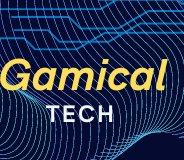
The Internet of Things (IoT) is rapidly evolving, promising to transform industries, enhance daily living, and reshape the global economy. As technology advances, several trends are emerging that will influence the future of IoT. This article explores key predictions, focusing on emerging technologies like 5G, edge computing, and innovative applications across various sectors.
1. The Impact of 5G on IoT
Faster Speeds and Lower Latency: 5G technology is set to revolutionize IoT connectivity by providing faster data transmission speeds and lower latency. This will enable devices to communicate in real-time, essential for applications that require instant feedback, such as autonomous vehicles and smart healthcare solutions.
Increased Device Capacity: 5G networks can support a significantly higher number of connected devices simultaneously. This is crucial as the number of IoT devices continues to grow exponentially. Enhanced network capacity will enable smart cities and large-scale industrial IoT deployments without congestion or performance issues.
Enhanced Applications: With the advent of 5G, applications such as augmented reality (AR) and virtual reality (VR) will become more feasible within IoT ecosystems. For example, remote medical procedures using AR will benefit from 5G’s low latency, improving outcomes and enabling new healthcare possibilities.
2. Edge Computing and Decentralization
Reduced Latency and Bandwidth Usage: Edge computing brings data processing closer to the source of data generation, allowing for quicker response times and reduced reliance on centralized cloud servers. This decentralization is particularly important for applications requiring immediate processing, such as smart manufacturing and real-time analytics.
Improved Data Privacy: By processing data locally, edge computing can enhance data privacy and security. Sensitive information can be analyzed and acted upon without needing to send it to a central server, thereby reducing the risk of breaches.
Scalability: Edge computing enables businesses to scale their IoT solutions more efficiently. Organizations can deploy localized processing nodes to manage specific IoT applications, leading to more flexible and adaptable systems.
3. Growth of AI and Machine Learning in IoT
Advanced Data Analytics: The integration of artificial intelligence (AI) and machine learning with IoT devices will lead to more sophisticated data analytics capabilities. Predictive analytics will become commonplace, enabling businesses to anticipate issues, optimize operations, and enhance customer experiences.
Automation and Autonomous Systems: AI will facilitate the automation of processes across various sectors. For example, smart factories will utilize AI-driven IoT systems to optimize production lines, while smart agriculture solutions will automate irrigation and pest control based on real-time data analysis.
Enhanced User Experiences: Personalized user experiences will improve as AI analyzes data from IoT devices to tailor services to individual preferences. In retail, for instance, smart mirrors and personalized marketing will offer tailored recommendations based on customer behavior.
4. New Applications Across Sectors
Healthcare Innovations: IoT will continue to transform healthcare through remote monitoring, telemedicine, and connected devices that track patient health in real time. Wearable devices will enable continuous monitoring of vital signs, leading to proactive healthcare interventions.
Smart Cities: The concept of smart cities will gain momentum as IoT devices enhance urban living. From smart traffic management systems that reduce congestion to intelligent waste management solutions, cities will become more efficient and livable.
Sustainable Practices: IoT technology will play a critical role in promoting sustainability. Smart energy management systems will optimize energy consumption in homes and businesses, while IoT sensors will monitor environmental conditions, aiding in conservation efforts.
Industrial IoT (IIoT): Manufacturing and supply chain operations will become increasingly reliant on IoT technologies. IIoT will enable real-time monitoring of machinery, predictive maintenance, and enhanced inventory management, leading to improved efficiency and reduced costs.
5. Enhanced Security Measures
Focus on Cybersecurity: As IoT devices proliferate, the importance of cybersecurity will grow. Future IoT ecosystems will prioritize robust security measures, including end-to-end encryption, secure device authentication, and continuous monitoring for vulnerabilities.
Regulatory Frameworks: Governments and regulatory bodies are likely to implement stricter regulations surrounding IoT security and privacy, ensuring that organizations adhere to best practices for protecting user data and preventing cyber threats.
Conclusion
The future of IoT promises to be transformative, driven by advancements in technologies like 5G, edge computing, and AI. As industries adapt to these trends, we can expect a more connected, efficient, and intelligent world. The potential applications of IoT will continue to expand, reshaping sectors from healthcare to smart cities and driving sustainable practices. However, addressing security challenges and developing regulatory frameworks will be crucial to ensuring the responsible growth of IoT in the years to come.
visit: gamicaltech.com
